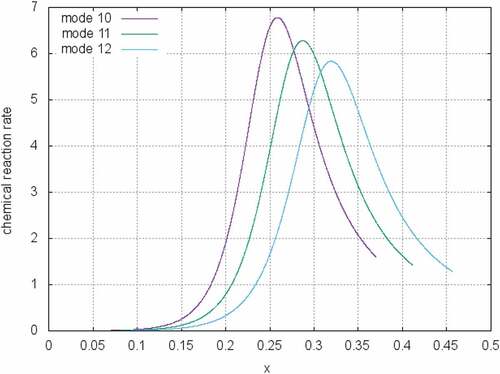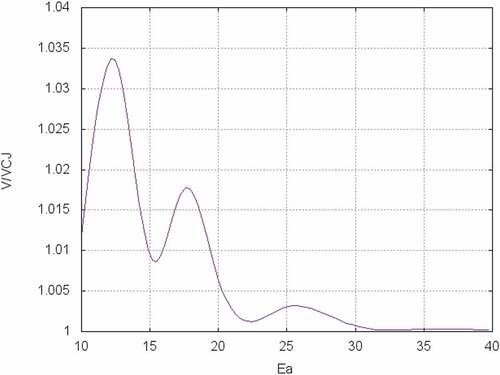Figures & data
Table 1. The input parameters
Table 2. Modes of self-sustained detonation for ,
and
Table 3. Modes of self-sustained detonation for ,
and
Table 4. Modes of self-sustained detonation for ,
and
Figure 1. Structures of detonation calculated from the eigenvalue problem, (a) density of mixture, (b) pressures of mixture, (c) temperatures of mixture, (d) Mach numbers in flame, (e) fraction of product, (f) reaction rate

Figure 2. Reaction rates of three detonation propagation modes corresponding to the mode 10, mode 11 and mode 12 in Table



